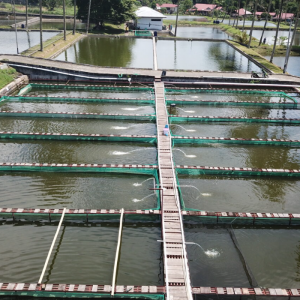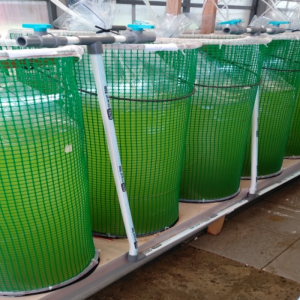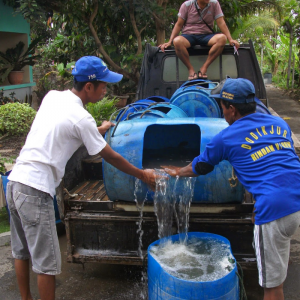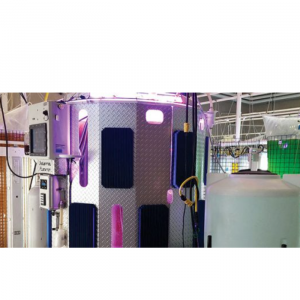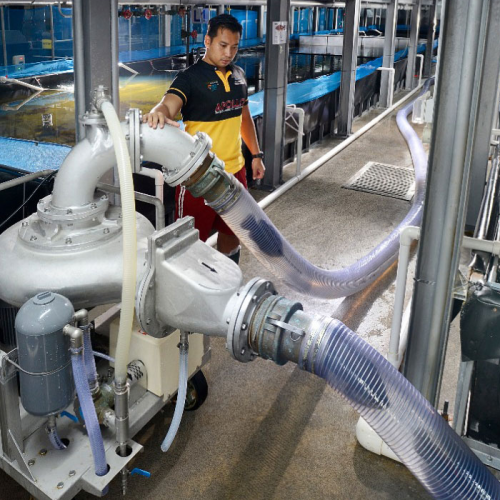
Farming Fish in the Sky
| Thu, 18 Feb 2021 - 17:36
Sometime soon, Apollo Aquaculture Group will have one of the world’s largest vertical fish farms up and running in Singapore. Though construction has been delayed by COVID-19, the farm, once complete, will scale eight stories. Crucially, says the company, it won’t only be the farm’s height that sets it apart from the competition.
The high-tech facility will produce up to 3,000 tonnes of hybridized grouper, coral trout, and shrimp each year—with an efficiency, measured in fish per tonne of water, that is six times higher than established aquaculture operations in the Southeast Asian city-state, says spokesperson Crono Lee.
In doing so, the company hopes to become a major contributor to an ambitious plan to boost the food security of the small island city-state, which currently imports 90 percent of its food.
According to Ethan Chong Yih Tng, an associate professor at the Singapore Institute of Technology who is not involved with the company, this stacking of fish farms is one of the key initiatives that geographically small Singapore is looking at to achieve its ambitious “30 by 30” target for food security—to produce 30 percent of its nutritional needs locally by 2030.
Also read: Benefits of Recirculating Aquaculture Systems
Founded in 1969, Apollo isn’t a new arrival to aquaculture in Singapore. Since the 1970s, it has been breeding ornamental fish across its 300-odd farms in the region. But when Eric Ng took over the family business in 2009, he was quick to diversify into producing marine fish as food, borrowing methods from operations in Germany, Japan, and Israel, says Lee. The outcome was a three-story farm in Lim Chu Kang, a rare green spot on the outskirts of Singapore. That aquaculture facility has been in operation for nearly a decade.
Each level of the Lim Chu Kang operation has two 135-square-meter tanks supplied with seawater by a system that filters, purifies, monitors, and recirculates water through the farm. As a result, only around five percent of the water needs to be replaced when contaminated by effluent from the fish—though Lee says the goal at both the new and existing facilities is to reduce that to zero using aquatic plants that clean and treat water naturally. That’s in contrast to significant levels of waste at Singapore’s traditional onshore pond farms, where farmers routinely clean out and replace entire tanks.
In nearly 10 years of operating the Lim Chu Kang farm, which produces up to 200 tonnes of fish per year, the company has built up meticulous data sets on how to increase yields, says Lee—data they will apply to the new, larger facility.
“We understand the amount of water required, the condition of the water, and the amount of feed—measured down to a single gram per cubic meter of water. As a result, we’re able to produce fish in a much shorter time frame, at the right size for the market,” says Lee.
Also read: Shrimp Farmers in Ecuador Tap An App To Seal A Better Deal
The decision to build this system up, rather than out, is a response to the lack of space in the Asian city-state. “We’re a very small country, and it’s very difficult to secure land,” says Lee. “So rather than building sideways, and expanding horizontally, why not expand vertically?”
Ever larger onshore fish farms is not the only approach the city-state is using to reach its 30 by 30 goal, however. In late 2019, for example, an offshore fish farm opened about five kilometers off Singapore’s Changi Point Ferry Terminal. Using a closed-containment system, it produces around 166 tonnes of barramundi, red snapper, and grouper each year across four tanks. The system “effectively isolates the fishes from the seawater when the quality of the surrounding water turns poor,” says Yih Tng. The self-contained system offers the control of Apollo’s vertical farm without the initial outlay on expensive land, or the high power costs.
Though Lee insists Apollo’s new eight-story farm will be economically competitive with traditional fish farms, high operating costs remain one of the primary reasons that commercial vertical closed loop fish farms remain limited globally.
In the United States, the majority of farms represented by the Recirculating Farms Coalition are outdoors, and much smaller than the Singapore operation, says founder and executive director Marianne Cufone. “That means we’re not as dependent on artificial inputs, such as temperature controls,” she explains.
Also read: Optimisation of Feeding Strategies at A Fish Farm Through Mathematical Modelling
“A lot of the larger systems sacrifice some of the natural benefits of [recirculating] systems in that they use a lot of energy for cooling, for heating, and for the circulating pumps. That’s not to say these outweigh the benefits, but a smaller, well-designed system can be extremely eco-efficient versus some of the larger-scale ones.”
The increased operational costs of a large facility translate to the price of the product: a 150-gram pack of Apollo’s ready-to-cook hybridized grouper fillet will set a customer back around US $12—roughly double the price of a frozen red grouper on sale at Singapore’s biggest grocer, Fair Price.
However, Cufone adds, large enclosed fish farms are becoming more prevalent in North America and the rest of the world. Few places is that growth more urgent than in Singapore—a fact only exacerbated by the spread of COVID-19.
“COVID-19 has exploded the awareness of [food insecurity] exponentially to local Singaporeans, and right now there’s a big shift in thinking toward local production,” says Lee. A shift that Apollo plans to take full advantage of.
Source: Hakai Magazine













